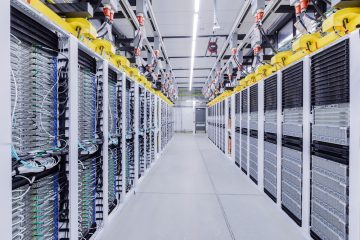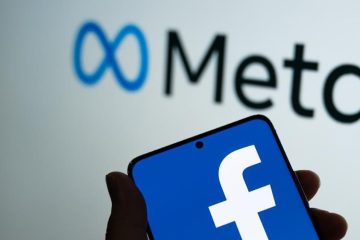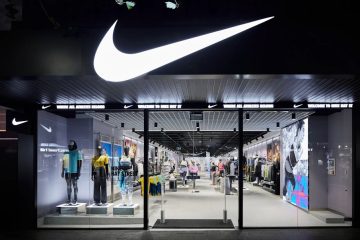Apple’s Big Stock Selloff Is a Sign of Things to Come

Apple stock was a Wall Street darling when it peaked at $ 233 a share on October 3, raising its market cap to a world-record $ 1.1 trillion. So it’s no surprise that the iPhone-maker’s 33% drop since then has emboldened the analyst community to declare that Apple (aapl) is now really, really cheap. At first glance, the standard metrics that gauge expensive versus bargain valuations even backs the optimists.
Apple’s downbeat earnings announcement, and its current, downward trajectory, carry the opposite message: Investor beware. Put simply, Apple is no longer remotely a growth stock that can deliver strong returns on reinvested capital, nor is it a value stock that can keep returning tons of cash to shareholders with no big outlays of capital. In the future, the best bet is that Apple will be forced to invest heavily in new products or acquisitions, and that those initiatives will yield at best mediocre, and certainly non-iPhone-like, returns.
(Earlier this month, this writer addressed the heavy investments that have been a drag on Apple’s returns in “Is Apple Suddenly a Great Buy? A Wonky Stat Provides an Answer.“)
Given that CEO Tim Cook had issued a shocking alarm on January 2, warning that Apple’s earnings would fall well below his previous forecast, the Q1 announcement on Tuesday held few surprises. Apple posted $ 88.3 billion in revenues for the quarter, and achieved a “gross margin” (revenues minus cost-of-goods-sold) of 38%. That’s in line with Cook’s alert at the start of the year, and far below his super-upbeat guidance on November 1, the day Apple unveiled its record numbers for fiscal 2018 (ended September 30), when Cook predicted sales of $ 89 billion to $ 93 billion in sales, and operating margin as high as 38.5%. As in the Jan. 2 release, Cook blamed the shortfall on a sharp slowdown in China, a market that accounts for one-fifth of Apple’s sales, and consumers’ resistance to spending $ 1,000 and up for an upgrade to its new iPhone XS line.
Wall Street seemed relieved: Its stock jumped 3.6% in post-close trading. Indeed, even the dire early-January warning did little to shake investors’ long-term faith in Apple, so it’s unlikely the announcement confirming the bad news will trigger any “sell” recommendations. Just prior to the new release, half of the approximately 50 equity analysts following Apple labeled its shares a “buy,” and the other half issued “holds.” Not a single analyst advised clients to sell. On average, analysts forecast a 13% gain in the share price, to $ 176 by year end.
A company in retreat
To understand why Apple is actually far from cheap, it’s important to examine its severe reversal of fortunes since the glorious autumn of 2018. That year represented a big comeback that prompted investors to herald a renaissance in growth.
From late 2015 to late 2017, Apple was in a funk. A good metric for gauging its decline is COROA, or cash operating return on assets, a measure developed by accounting expert Jack Ciesielski. COROA totals all the cash generated by an enterprise during the year, eliminating the effects of taxes and leverage by adding back taxes and interest actually paid as opposed to accrued, and divides that number by the assets deployed in the business. The higher the COROA, the better management’s performance in exploiting each dollar invested in plants, warehouses, stores, and working capital. And a rising COROA, year after year, means that a company is generating increasing returns on each new dollar of assets it’s adding to the balance sheet. In other words, it’s continuously improving, and charging in the right direction.
Apple, in contrast, was retreating. From the start of fiscal 2016 through September 30 of 2017, Apple’s total assets, measured as a yearly average, jumped by $ 104 billion to $ 392 billion. Yet despite re-investing that $ 100-billion-plus, primarily by plowing retained earnings into low-yielding securities, Apple generated $ 17 billion less in operating cash flows in 2017 than it posted in 2015. Its COROA, or cash return on assets, dropped over that two-year span from 33.1% to 19.9%.
In fiscal 2018, Apple experienced a remarkable resurgence. The fall of 2018 unfurled as spectacular Indian summer. A month after its stock hit the early October peak, Apple unveiled record results for the fiscal year, reversing the pattern of 2015 to 2017. In 2018, Apple raised its operating cash flow by $ 13 billion or 17%, and but effectively achieved that coup without adding new assets; in fact, its balance sheet shrank by $ 6 billion from the start to the end of the fiscal year. Swelling cash flow while shrinking assets is an ideal combination—a formula for a rising stock price, and a earmark of strong management.
What did Apple do with the cash it generated it didn’t keep? All the money, and more, went to investors. In fiscal 2018, Apple achieved free cash flow, consisting of cash from operations minus capital expenditures, of $ 63.7 billion. But it paid out an astounding total of $ 86.4 billion, or 136% of that amount, in buybacks and dividends, meaning it contributed excess cash from its balance sheet to reward investors. Apple’s bedrock business appeared recharged for growth. In 2018, revenues jumped by $ 37 billion or 16%, while costs rose just 13.8%, a combination that lifted margins. The mid-priced iPhone 6 was an enormous hit; in fact, the jump in iPhone sales accounted for seventy percent of the total rise in revenues.
Although the shift to generating lots of new cash with minimal new investment was encouraging, Apple didn’t make the best use of that cash. It deployed $ 73.1 billion towards buying its own shares back at high prices–an average of $ 180.30, 14% above today’s level. Had Apple used the same dollars to purchase its stock at current prices, it would have lowered its total share count, and raised earnings-per-share, by an additional 1.5%.
Lightning rarely strikes twice
The drop in Q1 earnings, and Cook’s warnings on China and sales of the iPhone XS, show clearly that 2018 represented an unrepeatable, one-of-a-kind phenomenon. On the other hand, Apple’s market cap has dropped by one-third, or $ 362 billion, meaning that investors expect that future earnings will be a lot lower than they’d forecast just four months ago. So does its seemingly modest valuation underestimate a great company’s future prospects, making Apple shares a great buy?
In effect, Apple could indeed be cheap in either of two scenarios. The first casts the smart phone colossus as a no-growth value stock. Over the past several years, Apple’s sustainable free cash flow appears to be around $ 50 billion, well below its extraordinary numbers for 2018. That puts its multiple of market cap to cash flow at 14.5. So if Apple were to do what it did last year, and return all of its cash flow to investors in the form of buybacks and dividends, it would produce “real” returns of 6.9% (the inverse of the 14.5 multiple), and nominal returns, assuming 2% inflation, of 8.9%. Since ten year treasuries yield just 2.5%, that looks like a great deal. “It would be like buying a preferred stock yielding almost 9% forever,” says Ciesielski. “The idea is that Apple would keep generating consistent income from its huge installed base.”
If that scenario were plausible, Apple would indeed be cheap. But Apple operates in a tumultuous, fast-moving industry where keeping profits high over the long-term depends on continually launching new products, not relying on old ones. “Apple resembles Microsoft a few years ago,” says Ciesielski. “Microsoft was throwing off lots of cash from Windows software, but couldn’t find a new hit. It finally renewed growth by expanding in services.”
In a second scenario, Apple would be cheap if it could find blockbuster successors to the iPhone. New hits must keep coming to sustain profits anywhere near current levels, let alone recharge growth––and so far, the XS is far from a hit. The iPhone’s rich margins are catnip for rivals with competing products, and foes such as Samsung are raising a mounting challenge to its supremacy. Most likely, Apple will be forced to invest giant amounts of cash in search of those hits.
In the past, Apple hasn’t shown any ability to raise returns by retaining cash. It might turn to acquisitions, an option it has previously shunned. But big mergers are both risky and expensive. In a sense, Apple is a victim of its own success. It will keep generating relatively high earnings and margins, but as it re-invests at low or negative returns, the story of 2016 and 2017, its cash flows will go flat or dwindle.
Investors dumped Apple’s stock for good reason. It’s hard to believe that its Indian summer ended just months ago.










